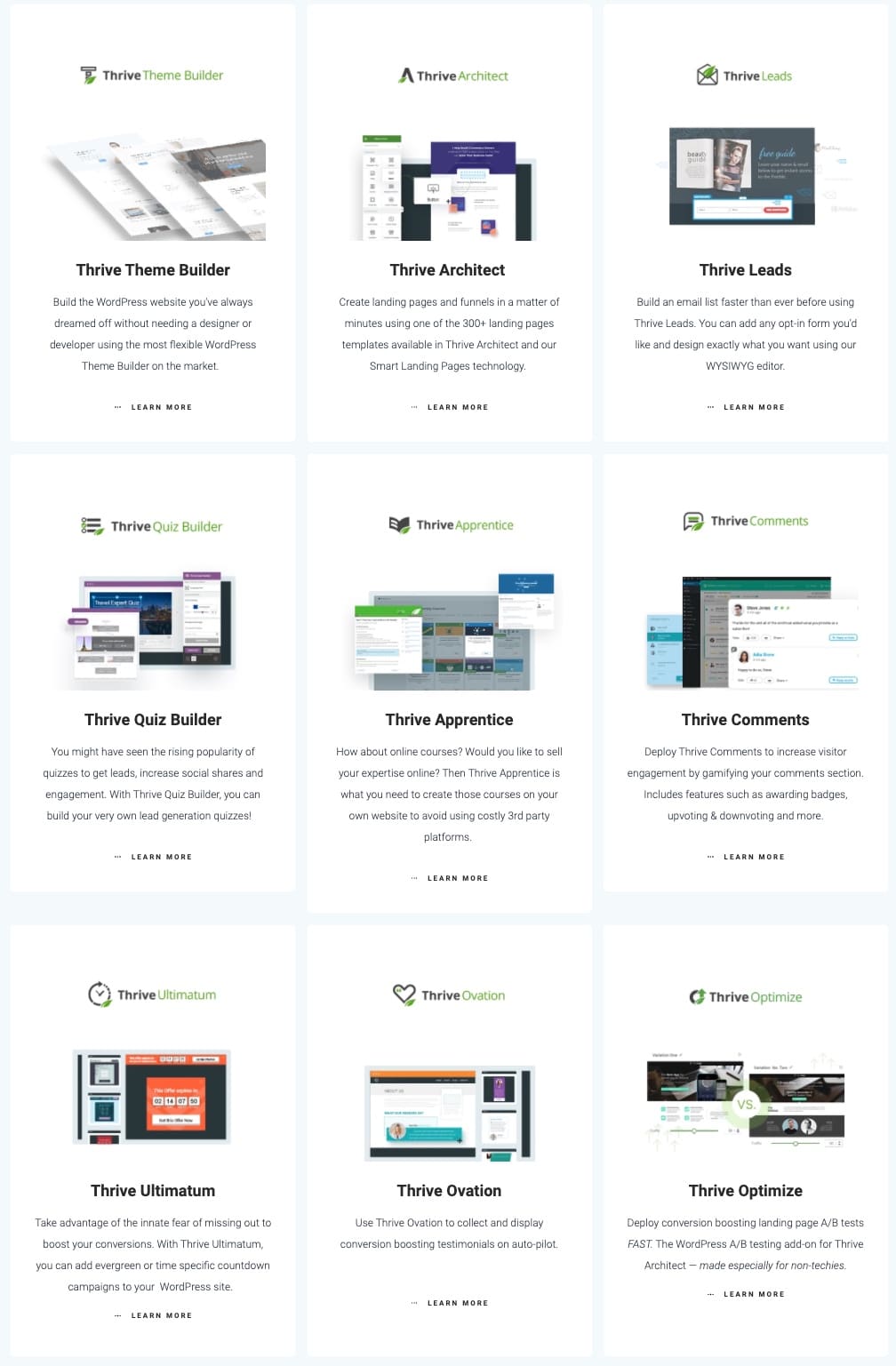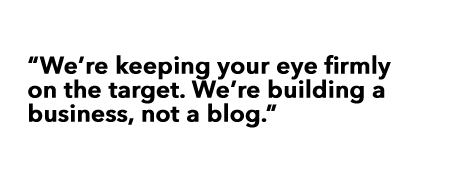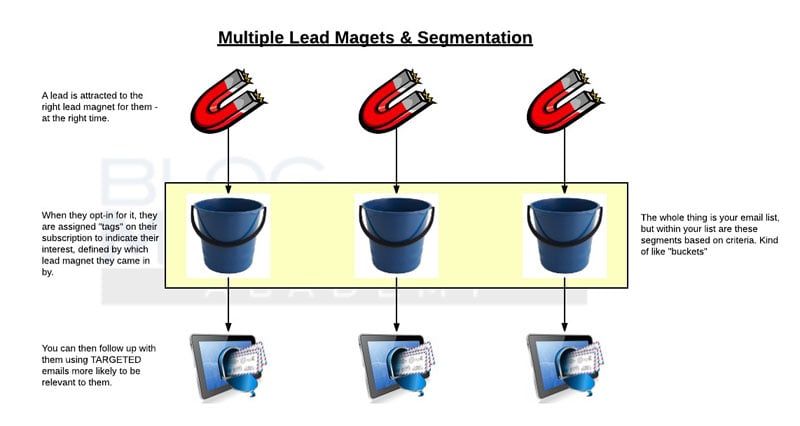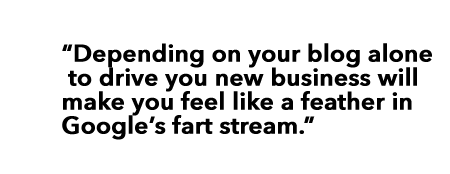In This Post…
There is no doubt that having momentum in your business is a great thing. Once you’ve built things up and have some forward motion, it is a lot easier to keep things moving and grow.
The hardest part is starting from scratch.
You have no traffic, no name recognition, no following… and it is hard to get that train moving. A lot of people give it up.
I recorded a guest interview for a podcast – and the question was posed to me. That question goes like this:
If you were starting today with no business foundation built; you’ve got a few thousand dollars in hand; you’ve got the internet, you’re employed on a regular wage, you’re allocating 3 hours a day Monday to Friday; and you’re going to dedicate most weekends to build your business. And you want to build an internet business..
With that knowledge, what five to ten steps would you take to conceptualize, build, launch and develop an operational location independent business producing income within 16 weeks, that’s 3 months from today?
This is a fantastic question. Two things I like about it are that (1) It is a situation most people find themselves in when starting out… in a day job and trying to build a business on the side, and (2) there’s a 3-month timeframe.
So, I outlined my answer. And, I thought I would detail it out here for my readers.
#1 – Stop searching for “how to make money online”.
One thing I know is that the sure-fire way to lose in this business is to (a) focus exclusively on the money, and (b) get distracted.
The first step to making money online is to stop searching for how to make money online.
Searching for “how to make money online” means that you’re coming into it with no vision of making yourself more valuable to the world in order to get a pay raise. Money isn’t a result of some magic combination of tricks you do, it is the result of making yourself indispensable to people in need of a solution.
I ran a survey just recently to find out what new training they’d like me to create for them. One response was this:
I have been looking over the last five years for a reliable money-getting program. If you know of one, please tell me.
This response is exactly what NOT to do if you want to succeed. A “money getting program” does not exist and people who promise one are usually scam artists. Programs don’t get money. Systems don’t get money. Systems can only help enable you to sell and deliver something valuable to a market who wants it. Your eye should always be kept squarely on providing value.
Secondly, the “how to make money online” search will most definitely lead you into a world of distraction and shiny objects. That search makes you a fish in a pond, where marketers are on the shoreline shooting you constantly.

#2 – Hone down the exact outcome or transformation that you will be in the business of delivering.
I want you to tattoo this one to your forehead if necessary..
You are not starting a blog. You are starting a business.
Starting a blog talking about stuff isn’t going to get you anywhere. Businesses provide solutions to problems, and it is solutions that people pay for. So, before you think about ANYTHING else, you need to be crystal clear on the exact outcome you’re in the business of creating for people.

That delivery of outcome serves as the orientation point for everything else, including your blog.
So, that’s what I would do. I would take into account my own strengths, what I’m good at… and I would look for crossover with areas of demand for solution. And I’d hone it down.
This isn’t about passion, like so many “gurus” profess. This is about solution delivery. If I want to start a business in 3 months, I’m not going to waste my time going in circles thinking about my passion. I’m just going to look for where I’d be of value and I’d go with it.
The Niche Profits Finder is a little worksheet tool I’ve created to help people figure this out for themselves. Click here to grab your free copy.
#3 – Acquire 3 Specific Tools To Get Started

Obviously, you’re not going to do much business without a homebase. So, if I were starting from scratch, I’d get my site set up.
But, here’s the big thing…
This is a 3-month timeframe. So, I wouldn’t go shopping for a bunch of fancy tools and get into “shiny object” land. I would concentrate on 3 specific solutions that I think are best for the highest ROI for the least cost. They are:
- Buy a basic hosting account from Siteground. They have solid hosting and you get a domain name for free. And, they have better support than Bluehost and other EIG companies.
- Pick up a membership with Thrive Themes. The Thrive Suite would give me everything I need, from the theme, to opt-in form builder, to landing page creation. It is truly one of the best values there is for anybody building a business on top of Wordpress. Click here for more a review of Thrive.
- Pick up an account with ConvertKit. This is for hosting my email list, something you absolutely need to do right from the get-go. If I really wanted to keep it on a budget here, I’d probably go with FluentCRM. See my FluentCRM review.
Since this is a 90-day plan, I would not be getting all fancy with theme tweaks, researching membership sites and the like. But, you will need hosting and an email list. You’re also going to need landing pages and opt-in forms, and Thrive is absolutely the best use of funds since you get access to so many valuable marketing plug-ins for one price.

One thing about my mindset here… and that’s on the idea of spending money. I know a lot of people starting out try not to spend any money and do everything for free. In most cases, they are sabotaging themselves. It doesn’t mean you have to spend money stupidly, but trying to avoid it is also stupid. If you want to build a business, you have to invest in it.
Unlike offline businesses, an online business can be built VERY cheaply. But, not for free.
And that goes especially if you want to build the business in a decent timeframe. This is all about building a business in a matter of months. If you don’t pick up the right tools in the beginning and just start, you’ll end up spending those months trying to re-invent the wheel and learning stupid-ass technical stuff that you have no business doing.
#4 – Create 3-5 Redwood Posts centered around the transformation you deliver

We’ve got 3 months. And, a lot of bloggers end up getting into a wheel spinning contest about all this content they think they need to make.

But, we’re keeping our eye firmly on the target. We’re building a business, not a blog. And, we need an offer and we need to get focused on that.
At the same time, your blog can’t be empty. So, here’s what I’d do…
Take the transformation that you deliver, and outline out all the typical roadblocks and barriers that people have to overcome on their way to achieving that transformation. Next, do some basic keyword research and find out which of those barriers get the highest search volume and have the most “bang” in the market.
Then, write some seriously kick-ass redwood posts centered around resolving those barriers. Not more than 3-5 of them, because we have other things to do than write blog posts.
A redwood post is a kind of pillar post, but it is one which we will turn into a major resource post over time. We’re going to circle back and keep this thing updated. And we’re also very likely going to invest a little bit of money into distributing this post right into the exact right target audiences in order to build awareness of our brand.
I call this The Redwood Strategy. It is something I have a full training around inside The Lab, called The Expanded Redwood Strategy.
Again, though…
We’re building a business, not a blog. And we have 90 days. So, don’t go off and jump onto the content hamster wheel. Concentrate on 3 solid resource posts with a great headline. You will circle back and update them again later, so they don’t have to be perfect on day 1. Post these posts to your blog… then let’s move directly onto building out a funnel that will make you money.
#5 – Create your lead magnets to build your list

Your email list is your most valuable asset. It is what gives your growing business leverage and the ability to direct attention at will. So, those 3-5 redwood posts you just wrote are essentially useless without list building as a firm goal.
So, you want to create a lead magnet. In fact, your best bet is to create one lead magnet for each of the redwood posts you’ve created. Each lead magnet tightly related to each post and positioned such that it is the natural “next step” to the blog post… almost as if they’re just leaving money on the table by not getting your lead magnet.

Now, I am definitely NOT advocating some big honker ebook, a multi-video “challenge”, or anything of the sort. There are 7 specific criteria for a high-conversion lead magnet, which I discuss in The Ultimate Guide To Building An Email List: List Building That Works And Makes You Money.
Your best lead magnets are going to be short and sweet. I’m a huge fan of worksheets, templates and other kinds of shortcuts. These kinds of lead magnets promise a shortcut by the simple act of getting the lead magnet and do not contain an inherent promise of a bunch of followup work.
For each lead magnet, you’ll want to put opt-in forms for it inside the redwood posts AND create a landing page for each one. Good news is that, if you purchased a Thrive Membership, you have access to both Thrive Content Builder and Thrive Leads. So, you have everything you need. So, you do this:
- Create a separate list inside Aweber for each lead magnet.
- Create a basic welcome email for each one. Welcome them to your site, tell them a bit about yourself, and deliver the lead magnet.
- Using Thrive Leads, create an opt-in form. Specifically, create a “Lead Shortcode”. This will enable you to place an opt-in form right in the middle of your blog post. Just hook up the form to the right Aweber email list, something that is easy to do with Thrive.
- Next, create a landing page for that lead magnet. Same basic idea, just now we have a whole separate page just for that lead magnet. This is useful to link to from within the post, to use on social media, or even in future advertising campaigns.
#6 – Create an offer out of thin air
If you have nothing to sell, you have no business. It’s sadly laughable how many blog owners out there still confuse having a blog with having a business. They’re NOT the same thing. You haven’t even truly stepped up to the starting line yet unless you have something to sell.
But, the last thing that I recommend you do right now is go head down and start creating some big online course. I also am not a fan of trying to build a business solely around affiliate offers. You give away all control of your business when you do that.
There are two ways which you can literally create an offer out of thin air:
- Sell a service and sell your time by offering a “done for you” offer or consulting.
- Create a pre-sale to sell a product which doesn’t exist yet.
Either of these ways will allow you to officially be in business without the long lead-up period to creating a whole product first. Quite frankly, it’s pretty stupid to create a training course until you’ve made some sales anyway.
[clickToTweet tweet=”It’s pretty stupid to create a training course until you’ve made some sales.” quote=”It’s pretty stupid to create a training course until you’ve made some sales.”]
If you decide to sell services (and I probably would if I were starting from scratch on a 90 day plan), I would use Thrive Architect to create a simple landing page which describes the service and what I’d do. I would focus it on THEM and how I will remove their pain. It wouldn’t be all about me and my skills… it would be about how I will remove their pain and solve their problem.
If the service was specific enough to price at a flat rate, I’d probably include a simple Paypal button for them to pay for it. For the sake of simplicity, I wouldn’t yet go out and acquire some fancy membership software or shopping cart. I can do that later.
If the service was more involved, I’d include a form on the landing page and their call to action would be to request a strategy session (or something to that effect). I’d definitely use Gravity Forms to make that form, since it is the best form plugin for Wordpress and I know I’ll have a ton of other uses for it later.

I probably would not use language like “request an estimate” since it is too vague. I would try to make it more benefit driven, and often people in need of a service would find value in discussing it and ironing out some details before talking money.
[highlight]For more on marketing a service using these methods, check out How I Would Market And Sell Web Development Services If I Were Still A Web Developer.[/highlight]
In terms of a pre-sale, the idea is to sell a product before it is created. The landing page will talk about the benefits of the product and the rough plan of action. You are being upfront with people that they are securing a spot on the course and that it doesn’t exist yet. Never mislead people. For this reason, I am a fan of pre-selling as a “live class” delivered online. I’ll just create the course right in front of them via webinar or something. I’ve done this several times and was able to bring in a few thousand dollars in sales for a course I hadn’t made yet.
Good thing, too, is that if it doesn’t sell, you didn’t waste your time. You can adjust the offer and test other things and only when you find the winner do you create it. In other words, you’re creating the product to match the offer which converts… rather than trying to convince people that they want what you’ve already made.
That’s super important.
#7 – Invest into native advertising on social media.

Depending on your blog to solely attract people out of the ether is going to be a slow process. Plus, it’ll be frustrating because you don’t feel like you’re in the driver seat at all. You’ll feel like you’re a feather in Google’s fart stream.
The way around that is paid advertising.
This gives you some levers that you can pull when you want to to drive business, rather than sitting around and crossing your fingers.
I would invest some money into native ads. This would include newsfeed ads on Facebook, promoted tweets on Twitter, Youtube ads, Google Adwords, maybe LinkedIn. More than likely, however, you’ll be able to do it with just Facebook.
In the early days – and certainly in our first 90 days – we’ll be bootstrapping. We’re not afraid to invest some money in this, but we don’t want to just throw it up against the wall either. Facebook ads can be a huge expense if not done right.
In the beginning, I’d be looking to start out with a budget of perhaps $5-$10 per day. And the cheapest way to begin to reach people will be:
- Building likes onto your Facebook page
- Running paid ads direct to a blog post (using those redwood posts you created)
- Doing a video ad and building up views, but the video is designed to introduce yourself and lead with value. This is a brand building thing which then pulls them over to your website.
These types of campaigns will usually be more cost effective in the beginning rather than trying to run people who have never heard of you directly into a squeeze page.
So, here’s what I’d do:
- Be sure the Facebook Pixel is installed on the website. You can do it manually or use a plug-in such as PixelYourSite.
- Set up a custom audience to capture anybody who visits your site.
- Set up a unique custom audience for each of your main redwood posts to capture people specifically who visit them.
- Set up a $10/day campaign to run traffic to one of my redwood posts. I’d invest about $6-7 of that into reaching brand new people by putting that redwood post right in front of the kind of people who would be good potential CUSTOMERS of my new business. The remaining $3-$4 I would put into a retargeting ad which will only be shown to people who visited that redwood post but didn’t opt-in. That ad would go direct to the landing page for the lead magnet that I created.
When you don’t have the audience, you have to go out and get them. Paid native advertising to the right groups of people is a great way to do that. It puts you in the driver seat.
You can read more about how I started a new blog from scratch using this technique… with a status report on a new RV blog.
#8 – Do Some Guerilla Marketing
Guerilla marketing is defined as:
Innovative, unconventional, and low-cost marketing techniques aimed at obtaining maximum exposure for a product.
And that’s what we’d need to do in the beginning in order to learn more about our market, what they need/want, and perhaps make some sales. At this point in our 90 day plan, we’d have all the basics in place. A few basic core blog posts, lead magnets, an offer, an email list hooked up… and some traffic coming into it from paid ads.
To kick it up a notch, though, you’re likely going to need to think outside the box and get your elbows dirty. You’ll need to get more personal and 1-on-1 with people. For instance, consider doing things like:
- When people opt into your list, reach out to them manually via email and see if they’d be willing to have a Skype conversation with you. Your purpose will be to find out more about what they need and want and what they’re looking to achieve.
- If you know people saw your offer page and didn’t act on it, reach out to them individually and find out why.
- Reach out to podcast shows in your niche and pitch yourself as a potential guest on their show. Any podcaster is looking for material. 🙂
- Get out there and comment on other blogs, social media groups, forums, etc.
The overriding point here is to make the most of what may seem like a small amount of people who are finding their way to your site. Treat them like real people and not anonymous email addresses or pixels on your traffic graphs.
As I build up this business in 3 months, I would be the most personable bloke on the Internet. This is a people business.
And remember, it isn’t just about making the sale. In fact, at this stage, it is every bit about finding out what they need and want so that you can deliver it. What you learn here could result in you changing your lead magnets or changing the very nature of your offer.
This is an important component of the discovery phase of product/market fit.
#9 – Deliver What They Want

You’ll be testing some things out using paid traffic. You’ll be seeing your conversion rates. You’ll also be talking to some people and getting those elbows dirty. You’re going to be learning and perfecting your offer to match what the market is asking for.
At that point… you simply deliver it. Deliver what they want. Make it awesome. Blow them away and make their transformation and them achieving their desired outcome your mission in life.
Email subscribers are great. Sales are great. But, if you’re not adding real VALUE to their lives, none of it lasts.
You deliver effectively and your business will grow. Sales will increase. You’ll get more traffic leverage and get more organic (free) traffic. The blog will be growing.
You’ve just launched your business. But, one more thing…
#10 – Seek Steady, Continual Growth
You must continue to find ways to improve your delivery. To make it possible to deliver more, deliver better, and deliver at scale.
If you went with a service offer to kick off, it is time to look for ways to systematize things. Record everything you are doing. Create training for it. Therein lies your ability to eventually launch a product offer and phase yourself out of service offers (or just raise your prices).
Never act like “you’ve arrived” and simply rest on your laurels. The moment you stop actively CREATING this business is the moment it starts to die. In the blog post I wrote about my 2014 lessons, I wrote:
The solution is to CREATE. To actively CREATE what we want. And, as an entrepreneur, I need to spend as much time in that creative mode as I possibly can. For much of 2014, I allowed myself to not exist in that space. I had gotten too concentrated on the next task, the next thing to check off my list.
So, look beyond 90 days and how you can expand this business with the same gusto that brought you to the 90 day mark.
What Now?
If you’ve read to this post in this post… awesome. 🙂 But, I’m guessing you haven’t yet done the stuff mentioned in this post.
I’m guessing that, most likely, you’re still at the beginning. You want to make that online business, but the path to doing it seems offly daunting and complicated.
I understand completely. There are a lot of unknowns. You have some leaps of faith and some decisions in your future, should you choose to travel this path.
But, I promise you… the path can be followed. It is even a fairly well worn pathway. Many have gone before you.
Inside The Lab, I’m working every day to create every tool one needs to travel this path. We also have a great community of like-minded people in there doing it – and they’re all very giving and would love to help and encourage you along the way.
I’d like to see you join The Lab. I’d do a happy dance if you did… because for me, that’s when the transformation begins. Sure, like any business owner, I like to make a sale, too. But, for me, that’s when the work BEGINS. When a member joins us, that’s more like the firecracker which starts the race, not the celebration of work accomplished.
But, aside from joining The Lab, it’s a good idea to hop back up to Step #2 above. To download the Niche Profit Finder (you’ll find it below) and really begin to put some thought into the transformation you wish to deliver. Then you can proceed to step #3 and acquire the 3 basic tools you’ll need to begin. ONLY those tools. Don’t go on a big shopping spree here. And, of course, if you already have hosting, don’t get that.
Got A Question? Need Some Assistance?
Have a question about this article? Need some help with this topic (or anything else)? Send it in and I’ll get back to you personally. If you’re OK with it, I might even use it as the basis of future content so I can make this site most useful.




